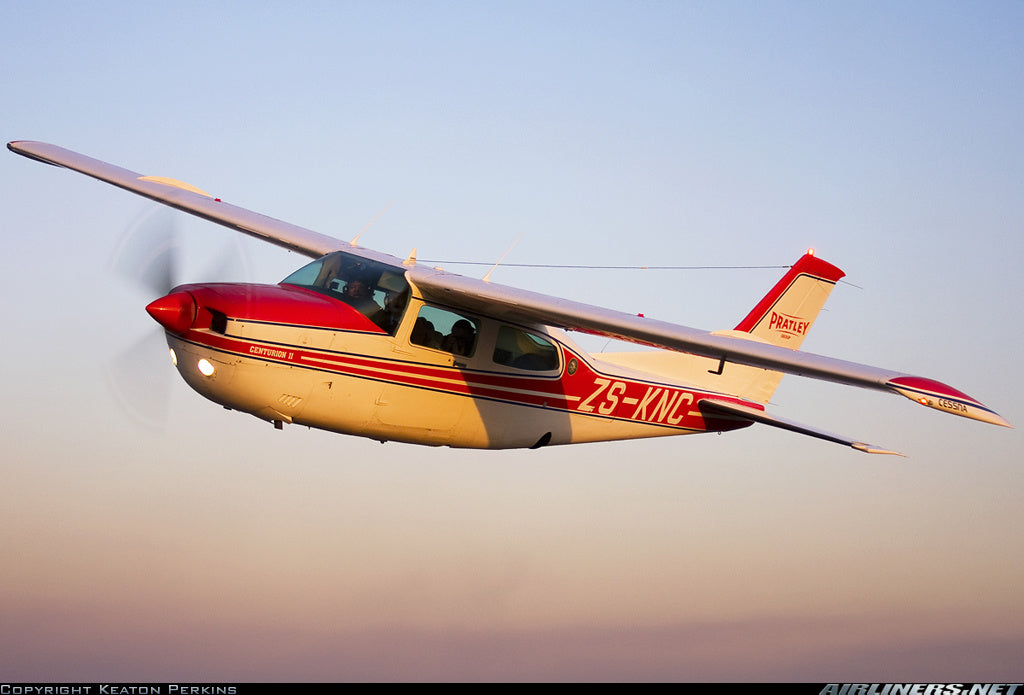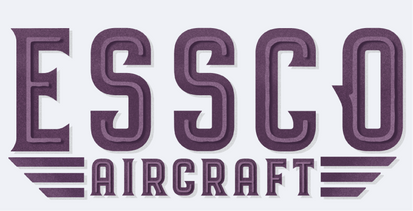
Number 30 in 100 in 100, The Cessna 210 Centurion 🛩️
Conceptualization
The Cessna 210 Centurion was developed in response to the aviation market trends of the late 1950s and early 1960s, which demanded faster, more versatile, and higher-performance single-engine aircraft. Pilots and aircraft owners sought planes combining speed, range, and the ability to operate from shorter airstrips, catering to private operators and flight schools. Cessna aimed to address these needs by producing an aircraft with retractable landing gear, a powerful engine, and a spacious cabin. This approach leveraged technological advancements to meet both current and anticipated future market demands, establishing the 210 Centurion as a leader in its class.
Original Design
The original design of the Cessna 210 Centurion, which first flew in January 1957 and entered production in 1960, featured several standout elements. The retractable landing gear reduced drag, enhancing aerodynamic efficiency and speed. A powerful 260-horsepower Continental IO-470 engine provided impressive performance. The cantilever wing design, which lacked supporting struts, further improved aerodynamics. The aircraft's spacious cabin could seat up to six people. Advanced avionics for its time improved navigation and safety, while the all-metal construction ensured durability, appealing to both personal owners and flight schools.

Photo Credit: airliners.net - Gary Shepherd
Designer/Team
The design and development of the Cessna 210 Centurion was led by Cessna Aircraft Company's engineering department. Specific individuals of the team are not prominently known, but the collective expertise of Cessna's design team was instrumental. The team had experience in earlier successful models such as the Cessna 170, 180, and 182. Their expertise enabled the integration of advanced features like retractable landing gear and cantilever wings. The design team continued to innovate post-210, contributing to later models like the Cessna 206 and 310, further cementing their legacy in aviation design.
Production Run
The Cessna 210 Centurion first flew in January 1957 and entered production in 1960, continuing until 1986. During this time, approximately 9,240 units were manufactured. The early production years focused on the original design, with significant changes introduced in 1966 with the 210G model and 1970 with the 210K model. The 210G featured a lengthened fuselage and increased fuel capacity, while the 210K offered an enlarged cabin and a more powerful engine. The introduction of the pressurized P210N in 1979 allowed higher altitude flying. Production volumes varied with market demand, peaking in the late 1960s and early 1970s, and declining by the mid-1980s.

Photo Credit: airliners.net - Okke Behm (GSN)
Evolution
The Cessna 210 Centurion evolved significantly throughout its production run. Initially produced in 1960, it featured retractable landing gear and a 260-horsepower engine. In 1966, the 210G introduced a lengthened fuselage and increased fuel capacity. The 1970 210K model offered an enlarged cabin and more powerful engine. In 1979, the pressurized P210N allowed high-altitude flying. The final major variant, the 1985 210R, featured a turbocharged engine and further refinements. These changes enhanced performance, comfort, and versatility, making the 210 suitable for personal, business, and training use, maintaining its competitiveness in the market.
Specifications
General Characteristics
- Crew: 1 (pilot)
- Capacity: 5 passengers
- Length: 28 ft 0 in (8.53 m)
- Wingspan: 36 ft 9 in (11.20 m)
- Height: 9 ft 8 in (2.95 m)
- Wing Area: 174 sq ft (16.2 sq m)
- Empty Weight: 2,350 lbs (1,066 kg)
- Max Takeoff Weight: 4,000 lbs (1,814 kg)
- Fuel Capacity: 90 gallons (341 liters)
- Useful Load: 1,650 lbs (748 kg)
Performance
- Maximum Speed: 201 knots (231 mph, 372 km/h) at 17,000 ft (5,182 m)
- Cruise Speed: 185 knots (213 mph, 343 km/h) at 80% power
- Stall Speed: 59 knots (68 mph, 109 km/h) with flaps down
- Range: 900 nautical miles (1,035 miles, 1,667 km) with 45 minutes reserve
- Service Ceiling: 27,000 ft (8,230 m) for pressurized models
- Rate of Climb: 1,100 ft/min (5.6 m/s)
Powerplant
- Engine: Continental TSIO-520-R
- Type: Turbocharged, fuel-injected, air-cooled, flat-six piston engine
- Horsepower: 310 hp (231 kW)
Avionics
- Standard Avionics Package: Modern IFR-capable avionics suite, typically including GPS, NAV/COM radios, transponder, and autopilot.
- Advanced Options: Glass cockpit options available in later models, including integrated flight displays, enhanced weather radar, and terrain awareness systems.
Dimensions
- Cabin Length: 12 ft 8 in (3.86 m)
- Cabin Width: 3 ft 6 in (1.07 m)
- Cabin Height: 4 ft 2 in (1.27 m)
- Baggage Capacity: 200 lbs (91 kg) in the rear compartment
Features
- Landing Gear: Retractable tricycle landing gear
- Pressurization: Available in P210N and later models
- Wing Design: Cantilever high-wing
- Construction: All-metal airframe for durability and longevity
- Interior: Configurable seating for passengers or cargo, comfortable seating arrangements with high-quality materials in later models
Comparison to Other Aircraft in Its Class
When compared to other aircraft in its class, such as the Beechcraft Bonanza and Piper PA-46 Malibu, the Cessna 210 Centurion holds its own with several competitive features:
- Speed: The maximum speed of 201 knots is competitive, though some models of the Bonanza can slightly exceed this.
- Range: With a range of 900 nautical miles, the Centurion offers excellent cross-country capability, comparable to the Piper Malibu.
- Service Ceiling: The pressurized models of the 210 can reach up to 27,000 ft, surpassing some unpressurized competitors and offering better high-altitude performance.
- Capacity: Seating for up to 5 passengers is standard for its class, though some variants of the Bonanza offer similar capacity.
- Payload: With a useful load of 1,650 lbs, the Centurion provides ample payload capacity, suitable for both passengers and cargo, which is on par with its direct competitors.
- Avionics: The availability of advanced avionics and glass cockpit options in later models ensures the 210 remains modern and competitive in terms of pilot interface and safety features.

Photo Credit: airliners.net - Gabriel Luque
Performance
V-Speeds
- Vne (Never Exceed Speed): 204 knots (235 mph, 378 km/h)
- Vno (Maximum Structural Cruising Speed): 165 knots (190 mph, 306 km/h)
- Va (Maneuvering Speed):
- 3,300 lbs: 119 knots (137 mph, 220 km/h)
- 4,000 lbs: 128 knots (147 mph, 237 km/h)
- Vfe (Maximum Flap Extended Speed):
- 10° Flaps: 140 knots (161 mph, 259 km/h)
- 20°-30° Flaps: 105 knots (121 mph, 194 km/h)
- Vle (Maximum Landing Gear Extended Speed): 140 knots (161 mph, 259 km/h)
- Vlo (Maximum Landing Gear Operating Speed):
- Extension: 140 knots (161 mph, 259 km/h)
- Retraction: 120 knots (138 mph, 222 km/h)
- Vs (Stall Speed, Clean Configuration): 65 knots (75 mph, 120 km/h)
- Vso (Stall Speed, Landing Configuration): 59 knots (68 mph, 109 km/h)
- Vy (Best Rate of Climb): 95 knots (109 mph, 176 km/h)
- Vx (Best Angle of Climb): 70 knots (81 mph, 130 km/h)
G Load Limitations
- Positive Load Factor:
- Flaps Up: +3.8 G
- Flaps Down: +2.0 G
- Negative Load Factor:
- Flaps Up: -1.52 G
- Flaps Down: Not Applicable
Approved Maneuvers
- The Cessna 210 Centurion is certified in the Normal Category, which means it is approved for all normal flight maneuvers, including:
- Steep turns
- Lazy eights
- Chandelles
- Stalls (except whip stalls)
- Spins are not approved in this category.
Suitability for Training and Personal Aviation
Training
- High-Performance Training: The Cessna 210 is an excellent platform for high-performance and complex aircraft training due to its retractable landing gear and variable-pitch propeller.
- Instrument Training: With its advanced avionics, including options for glass cockpit configurations, the 210 is well-suited for instrument flight training, helping pilots become proficient in IFR operations.
- Cross-Country Training: Its long range and high cruising speed make it ideal for cross-country flight training, providing students with the experience needed for long-distance navigation and flight planning.
Personal Aviation
- Speed and Efficiency: With a maximum speed of 201 knots, the Cessna 210 allows personal aviators to cover long distances quickly, making it ideal for business travel and personal trips.
- Comfort and Space: The spacious cabin with seating for up to five passengers provides comfort and flexibility, catering to families and small groups.
- High-Altitude Performance: The pressurized models can fly at altitudes up to 27,000 feet, allowing pilots to avoid weather and turbulence, which is a significant advantage for personal travel.
- Versatility: The aircraft's ability to carry a substantial payload and its robust construction make it suitable for a variety of missions, from family vacations to transporting equipment for outdoor activities.
- Safety Features: The availability of modern avionics and enhanced safety systems in later models ensures a safe flying experience, which is crucial for personal aviation.
Safety Record
The Cessna 210 Centurion has a generally good safety record but has faced issues with its retractable landing gear, structural integrity, and pressurization system. Common concerns include gear failures, wing spar fatigue, and engine issues. Notable incidents often involve landing gear malfunctions and structural fatigue. Compared to similar aircraft like the Beechcraft Bonanza and Piper PA-46 Malibu, the Centurion’s safety record is comparable, with similar issues in gear and structural maintenance. Regular inspections, adherence to Airworthiness Directives, and proper training are crucial for maintaining safety in this versatile aircraft.
Acquisition Cost
The original acquisition cost of the Cessna 210 Centurion in 1960 was approximately $36,000. Today, the value of a used Cessna 210 varies based on its condition and model year. For instance, a 1967 210G averages around $70,000, while a 1980 turbocharged T210N can cost about $180,000. A well-maintained, upgraded pressurized P210R can fetch up to $400,000. The appreciation in value reflects the aircraft’s enduring popularity and robustness. Models with low engine time, modern avionics, and thorough maintenance histories tend to command higher prices due to their enhanced performance and reliability.

Photo Credit: airliners.net - Keaton Perkins
Bibliography
Aviation Consumer – Cessna 210 Review
NTSB Aviation Accident Database
Aircraft Owners and Pilots Association (AOPA)
Wikipedia – Cessna 210 Centurion
Essco Links:
